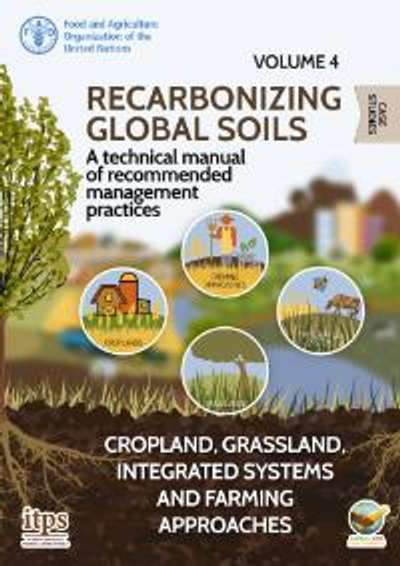Recarbonizing Global soils, Volume 4 - Cropland, Grassland, Integrated Systems and Farming Approaches - Case Studies
FAO; ITPS

Abstract:
During the last decades, soil organic carbon (SOC) attracted the attention of a much wider array of specialists beyond agriculture and soil science, as it was proven to be one of the most crucial components of the earth’s climate system, which has a great potential to be managed by humans. Soils as a carbon pool are one of the key factors in several Sustainable Development Goals, in particular Goal 15, “Protect, restore and promote sustainable use of terrestrial ecosystems, sustainably manage forests, combat desertification and halt and reverse land degradation and halt biodiversity loss” with the SOC stock being explicitly cited in Indicator 15.3.1.
This technical manual is the first attempt to gather, in a standardized format, the existing data on the impacts of the main soil management practices on SOC content in a wide array of environments, including the advantages, drawbacks, and constraints. This manual presents different sustainable soil management (SSM) practices at different scales and in different contexts, supported by case studies that have been shown with quantitative data to have a positive effect on SOC stocks and successful experiences of SOC sequestration in practical field applications.
Volume 4 includes 51 case studies dealing with cropland, grassland, integrated systems and farming approaches.
https://doi.org/10.4060/cb6598en
Publication Details
- Published: 2021
- Publisher: FAO
- ISBN-13: 978-92-5-134897-0